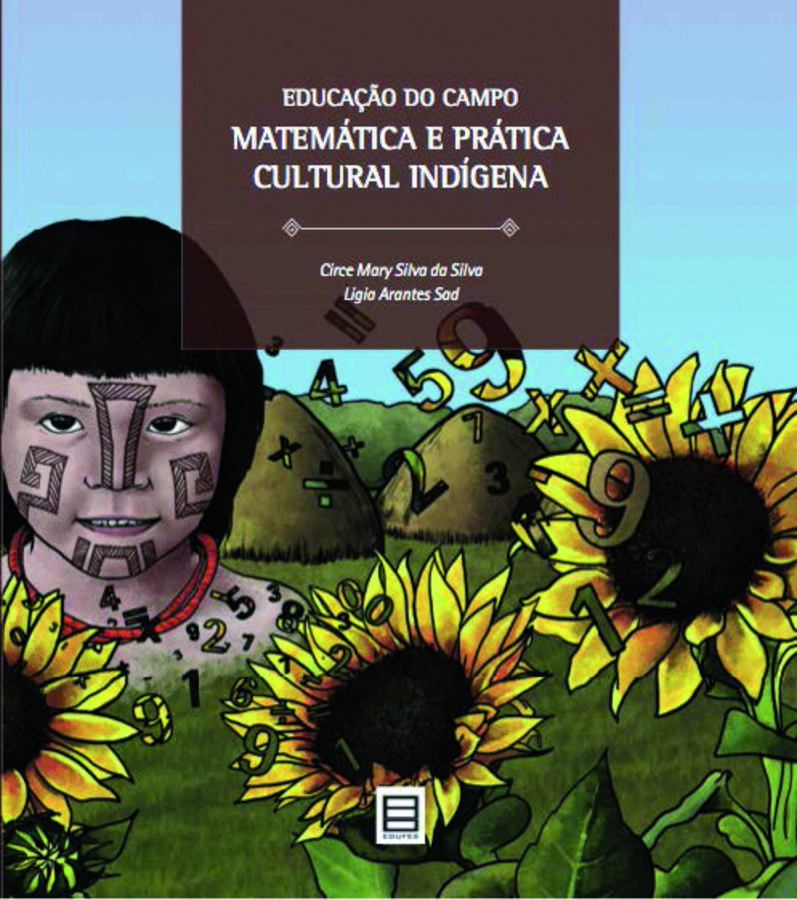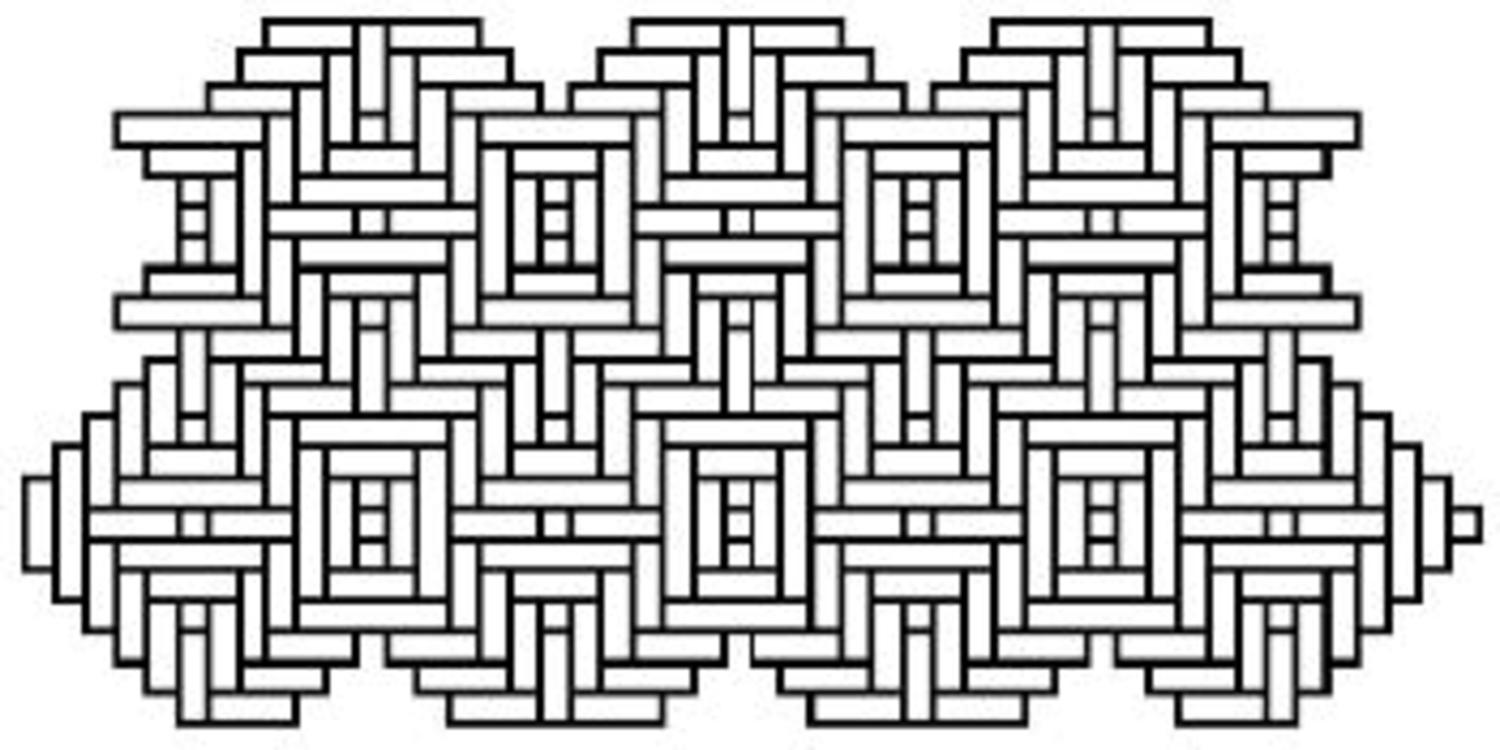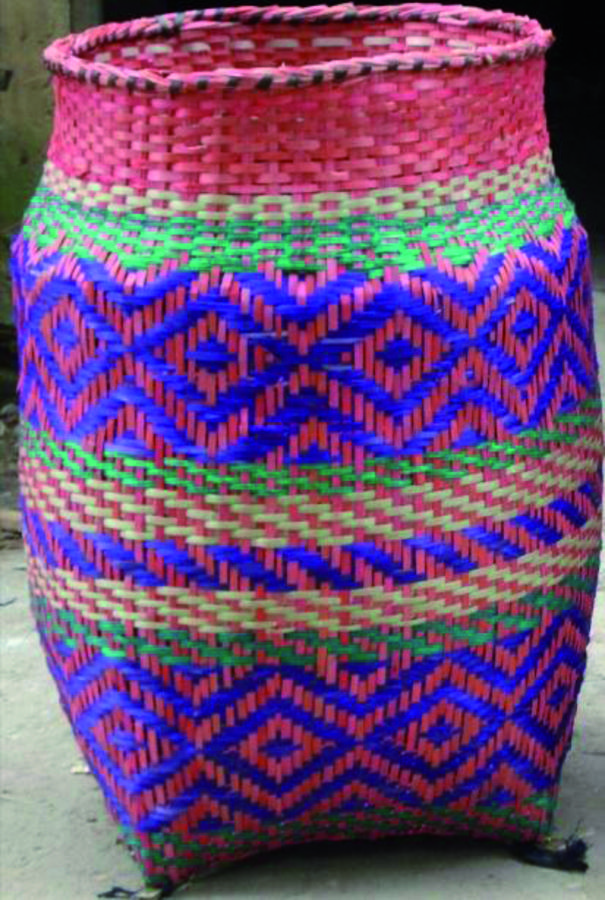Currently, the indigenous population of Brazil is about 817,000, representing 0.4 % of the country’s population. Most of the indigenous people live in the north of the country. In the state of Espírito Santo 2,630 Tupinikim and 262 Guarani live on lands designated to “them” by the government, though they are constantly fighting to keep this land due to the economic interests of companies that have also settled in the region.

Fig. 19.1: Mathematics and Indigenous Cultural Practice. See Silva and Sad (2019).
Between 1996 and 1999, the Tupinikim and Guarani in Espírito Santo had a new experience—the chance to get professional training to work in an intercultural and bilingual school and to be able to assume teaching activities. In assuming the actual teaching activities, the indigenous educators felt the need for continuous monitoring by teachers from whom they had received the initial training. The books used in the non-indigenous schools proved to be ill adapted to the teaching proposal. Thus, educators requested specific textbooks for teaching in indigenous schools. This chapter tells the story of the production of a mathematics textbook for indigenous schools, which was produced in cooperation with my colleague Ligia Sad (Silva and Sad 2019).
From 1984 onwards Peter Damerow advocated “mathematics for all” and drew attention to the danger of importing European standardized curricula into developing countries. In defending his viewpoint, he pointed to the issue of culture: “So I think the relations between mathematics and culture is the first and maybe the most general question which arises when mathematics for all is taken as a program” (Damerow et al. 1984, 18).
For hundreds of years indigenous Brazilians were either forgotten or received schooling by imposition that did not take their cultures into consideration. When discussing with Damerow for the first time the idea of creating a textbook of mathematics that was close to both the school and the cultural reality of the indigenous villages of Espírito Santo, his first reaction was one of great excitement. He then put his personal library at my disposal and suggested that I consult the library of the Max Planck Institute for the History of Science. As was his style, he also raised simple but rather crucial questions for the foundation of the proposal that stated: What ethnic groups are they? Where do they live? What activities do they develop for survival? What techniques do they use? What are their skills? What are their beliefs? These questions motivated a study that we developed with these two ethnic groups and the results are presented in The Transformations of Knowledge Through Cultural Interactions in Brazil: The Case of the Tupinikim and the Guarani (Silva and Sad 2012). For Damerow, it was essential that the activities proposed in the book were in tune with the way of life in the villages and not too far from the mathematics of non-indigenous schools. And, above all, it was important that the indigenous educators participated in the preparation of these works and tested them, because only in this way would the book reflect the aspirations of the indigenous community in Espírito Santo. It was necessary to give a voice to the community who would receive this book.
The preparation process of the book was very slow. Since the results of official assessments of student performance in indigenous schools were far below that of non-indigenous schools, courses dealing with the continuing education of indigenous educators were conducted at the same time. Moreover, the academic research of my mentees, Marcilino (2005), Magalhães (2007), and Lorenzoni (2010), helped to acquaint us with the Tupinikim and Guarani cultures as well as the realities of the school situation in the village schools.
Methodologically, we chose to prepare a text for teaching mathematics containing activities drawn from actual situations in the villages. The choice of activities involving the curriculum content was informed by the important issues related to their lives and culture.
The book proposes that the study and learning process of mathematics in the indigenous school contribute to the formation and interaction of both students and indigenous community members with the environment and society, which can strengthen the socio-political and economic organization of the Guarani and Tupinikim people in the globalized world context. According to Marcilino (2005), for these educators mathematics education should be a means for the affirmation of Tupinikim and Guarani cultures and for their self-sustaining development, thus creating conditions for students to acquire diverse knowledge. Moreover, it is expected that people who are conscious of education will have the ability to intervene in the building of a better society by promoting peace. The indigenous people understand peace as harmony with oneself, with the environment, and with nature.
Mathematics and Indigenous Cultural Practice constitutes a rather unconventional textbook because it takes the indigenous community as its starting point, and touches on themes such as agriculture, handicrafts, or body painting. It also incorporates the reports of indigenous educators and articulates the mathematical content of the lower grades in school in the form of proposed activities.
The approach of the book is to refer mathematical concepts such as the decimal system to objects and practices familiar from the daily life of the indigenous people, such as frequently used plants, or fishing activities. Thus, Chapter 1 is based on the wise indigenous men and women’s experiences with healing plants. It proposes using counting activities based on the decimal system and the calculation of estimates, thereby giving voice to educators who then reported their knowledge of the Aroeira plant:
In the Comboio village there is a native plant called Aroeira. It is a very important plant because besides serving several purposes it also contributes to the survival of village families over a period of four months each year. The villagers have known about the Aroeira plant for a long time, but its commercial value and usefulness were discovered only three years ago. It is important for the community because while being native, it is a source of income that does not consume community funds. We know that it is used as a substitute for black pepper, as an appetizer, in the manufacture of some glues as well as in the composition of a medicine to fight disease of the cornea.
Chapter 2 focuses on the topic of fishing, exploring mathematical concepts such as arithmetic operations, units of measurement, geometric objects, tables, and graphs. In Chapter 3 we introduce historical comments about the indigenous population in Brazil, the concept of place value and structure of the decimal system. For Chapter 4 we chose a topic of great importance in the lives of indigenous people—agriculture. The most common crops in the villages in Espírito Santo are manioc, beans, corn, and pineapple. We use this theme to explore the concepts of fraction and percentage. Giving voice to indigenous educators, we introduced a report showing how beans were planted: “the bean was planted by hand and without the use of chemicals, because there was enough space for the technique of ‘coivara,’ that is, our ancestors chose a place where they cleared the land of underwood and burned the bushes. Afterwards, they gathered in heaps branches that had not been completely burned, and set fire to them again, thus clearing the land. The ashes of burnt material served as fertilizer for the soil.”
Chapter 5 presents geometric concepts related to indigenous housing construction and delves into geometric concepts such as parallelism, perpendicularism, angles, perimeter, area, and volume. “Making manioc flour in Quitungo” is the subject of Chapter 6, which provides activities for the development of mathematical skills to calculate, measure, and estimate, among others. The theme of Chapter 7 is related to beauty and art since it delves into indigenous handicrafts. In this chapter, the mathematical content addressed deals with the enlargement and reduction of figures, as well as the arithmetic operations involved in trade with these crafts. Thus, for example, an activity involving Guarani basketry and the concept of symmetry are included: “Use the basket model below and color with the same color all the vertical stripes and with another color, all horizontal stripes” (Lorenzoni 2010).

Fig. 19.2: Weaving basket model. Source: Gerdes (2011).

Fig. 19.3: Guarani basket. Source: Lorenzoni and Marcelino (2010).
Chapter 8 deals with an issue that involves the beauty of indigenous body painting and links it to geometry, mainly to questions of symmetry as well as curved and straight lines. The explanation of the importance of body painting is given by an educator: “The importance of the painting for us Guarani is that it is a symbol of life. There are paintings for males and females, for the newborn; there are paintings for the woman warrior, paintings of encounters, and paintings that only the leader, that is, the chief can use.” An appreciation of heavenly knowledge is discussed in Chapter 9, in which we address counting, numerical operations, geometry (flat and three-dimensional geometric shapes), geometric views, tables and graphs, and flat location. The indigenous school is an important space for new generations in which school education and indigenous community education join together to meet the diverse needs of each person. For this, community involvement is paramount in the appreciation of their culture, in the strengthening of identity and collective policy, according to social goals and personal aspirations.
Mathematics and Indigenous Cultural Practice discusses mathematical concepts related to elements of cultural diversity and thus extends and complements the teaching of mathematics. This should also be thought of in the social dimension of its capacity to commit citizens to each other, regardless of their cultural or social background. We agree with Peter Damerow, who believed in the distribution of knowledge. According to him: “[...] we reject assumptions that mathematical knowledge is the prerogative of some cultural communities and not others and instead see mathematics as something potentially appropriate to all people” (Damerow et al. 1984, 25).
References
Damerow, Peter, Mervyn E. Dunkley, Bienvenido F. Nebres, and Bevan Werry, eds. (1984). Mathematics for All: Problems of Cultural Selectivity and Unequal Distribution of Mathematical Education and Future Perspectives on Mathematics Teaching for the Majority. Science and Technology Education, Document Series 20. Adeleide: UNESCO.
Gerdes, Paulus (2011). Geometria dos trançados Bora na Amazônia Peruana. São Paulo: Editora Livraria da Física.
Lorenzoni, Claudia A. (2010). Cestaria Guarani do Espirito Santo numa perspectiva etnomatemática. PhD thesis. Vitória: Universidad Federal do Espírito Santo Centro de Educaçao.
Lorenzoni, Claudia A. and Ozirlei Marcelino (2010). Interculturalidade na construção de um currículo de matemática para as escolas Guarani. X Encontro Nacional de Educação Matemática. Salvador. url: http://www.lematec.net.br/CDS/ENEM10/artigos/CC/T22_CC1629.pdf.
Magalhães, Doris R. de (2007). Concepções, crenças e atitudes dos educadores Tupinikom frente a matemática. PhD thesis. Vitória: Universidad Federal do Espírito Santo Centro de Pedagógico.
Marcilino, Ozirlei Teresa (2005). Ensino e aprendizagem na educação indígena do Espírito Santo: a busca de um diálogo com a etnomatemática. PhD thesis. Vitória: Universidade Federal do Espírito Santo.
Silva, Circe Maria Silva da and Ligia A. Sad (2012). The Transformations of Knowledge Through Cultural Interactions in Brazil: The Case of the Tupinikim and the Guarani. In: The Globalization of Knowledge in History. Ed. by Jürgen Renn. Berlin: Edition Open Access. url: http://edition-open-access.de/studies/1/27/index.html.
– (2019). Matemática e prática cultural indígena. Curitiba: Appris.
